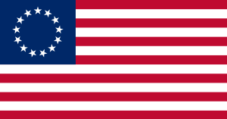It’s only 2023, but South Carolina is already marking the 250th anniversary of the American Revolution. In 2018, the SC General Assembly created a 250th commission to lead us through the celebration of the entire war from its start in 1775 to its close in 1783. The commission members, their staff, county committees, and dozens of individuals who research and interpret the state’s role in the American Revolution already have many accomplishments under their belts. Find out more at southcarolina250.com.
We South Carolinians cherish the deeds and sacrifices which birthed our independence. The 250th anniversary gives us opportunities for dozens of projects. The Liberty Trail is one example. It’s in development throughout the state and will provide a driving tour of South Carolina Rev War sites. More at battlefields.org. And download the Liberty Trail app for sites which can be accessed right now.
Let’s bust up a few myths about the Rev War in South Carolina.
Myth 1: Those who favored independence were called patriots.
Facts: It’s fine to use the word patriot for those who wanted independence from Great Britain. I do! However, nobody used that word during the Revolution. The men and women who sought independence from the King called themselves Whigs.
Myth 2: South Carolinians stood solidly against British rule.
Facts: Most enslaved South Carolinians favored the British cause, though some assisted the rebels. The Brits offered emancipation to all those in bondage who could escape their masters and join the British Army or Navy. When the war began in 1775, approximately half of all South Carolinians were enslaved. But by war’s end about 30,000 had cast off their shackles. And about a third of white South Carolinians were Tories. They stood with King George!
Myth 3: The war which began in 1861, when Citadel cadets fired cannon balls on Fort Sumter, was our nation’s first civil war.
Facts: The first civil war in the United States erupted when the British took Charleston in May 1780, and established fortifications in the South Carolina Backcountry. The soldiers were there to stamp out the American rebellion, not to establish law and order. During the next 18 months, Loyalists murdered Whigs and vice versa; stole one another’s livestock; destroyed one another’s farms; and torched one another’s barns. Several thousand South Carolinians died from this other war’s carnage. Many others, without shelter, food, or medical care, died as well. That war-within-a-war was the country’s first civil war.
Myth 4: A few battles such as King’s Mountain, Cowpens, and Eutaw Springs took place in South Carolina. Most of the Revolutionary War’s actions occurred hundreds of miles to the north.
Facts: More battles and skirmishes were fought here than in any other state. Lord Charles Cornwallis was forced to march his army to Yorktown, Virginia, to get re-supplied or to escape by sea. He couldn’t accomplish either goal, so he surrendered to George Washington and the French. Why did Cornwallis go to Virginia? Because dozens of skirmishes and battles in the Palmetto State wore down Cornwallis’s troops and drained his supplies. The surrender of the British army convinced the British parliament the war was lost.
Myth 5: South Carolina’s American Revolutionary War sites are managed by the U. S. Park Service. These are Fort Moultrie, Cowpens, King’s Mountain, and Ninety-Six.
Facts: The National Park Service does a superb job preserving and interpreting those significant sites. Two sites, Musgrove’s Mill and Blackstock’s Plantation, near Clinton, belong to the state. However, most of South Carolina’s Rev War sites are owned privately. The Liberty Trail is making many of these sites accessible to the public.
Myth 6: The war in South Carolina was fought between soldiers wearing blue coats (American Continentals) and red coats (British Regulars and American Provincials).
Facts: Thousands of participants in the Rev War, both Loyalists and Whigs, were militia. These men left behind their farms and families to fight. Whenever possible, they returned home to plant and harvest crops and care for their families. They received no pay, carried their own guns, rode their own horses, and wore their own clothes.
Myth 7: Most of South Carolina’s Rev War clashes took place in the Low Country and Charleston.
Facts: With the exception of Anderson County, there was combat in every South Carolina county.
Myth 8: When the war ended, South Carolina’s Loyalists were banished.
Facts: At least 5,000 of the state’s Loyalists boarded ships in Charleston and settled in Canada, England, and the Caribbean. With a few notorious exceptions such as Bloody Bill Cunningham they left the state of their own free will. Thousands more made amends with their neighbors and remained in the state.
Myth 9: The murderous British officer Lt. Col. Banastre Tarleton once locked patriot families inside a church and burned it down.
Facts: This scene is found in Mel Gibson’s 2000 movie The Patriot. South Carolinians hated Tarleton. But a massacre of civilians inside a church? Nope.

